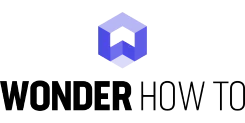Reviewed by Julianne Ngirngir
Smart homes have always been about the promise of seamless connectivity, but for years that promise felt more like wishful thinking. You'd buy a smart thermostat from one company, smart lights from another, and a voice assistant from a third—only to discover they barely talked to each other. It was like having a house full of brilliant roommates who all spoke different languages.
That's finally changing. The Connectivity Standards Alliance has released Matter 1.4.2, packed with enhancements that make connected devices more secure, scalable, and reliable. After Matter 1.4 was released on November 05, 2024, introducing significant advancements in device categories and energy management, we're seeing the smart home standard actually deliver on its original promises.
The protocol that arrived with a splash several years ago, full of promises to unite the smart home world, is finally showing real maturity. What makes this moment different is that Matter is evolving from a simple compatibility layer into a comprehensive platform for home intelligence that creates tangible value for users.
What makes Matter 1.4 the game-changer we've been waiting for?
Here's what's genuinely transformative about Matter's latest evolution: it's delivering on the multi-ecosystem promise that seemed impossible just two years ago. The latest specification, Matter 1.4, supports enhanced Multi-Admin functionality for simplified device sharing across multiple platforms. This means you can set up a smart light once and immediately control it through Apple HomeKit, Google Assistant, and Amazon Alexa without any additional configuration—no duplicate setups, no platform favoritism, just universal control.
The technical foundation has gotten seriously robust. Matter uses IP-based communication and can run over Wi-Fi, Ethernet, and Thread (that low-power wireless mesh network that's been quietly revolutionizing device connectivity). But the real infrastructure breakthrough is how Matter 1.4 supports Matter-certified Home Routers and Access Points (HRAP) to strengthen smart home infrastructure.
This certified infrastructure support transforms how Matter devices connect and communicate. Instead of relying on individual device connections that could fail during network hiccups, the entire home network becomes optimized for Matter traffic. Devices maintain stronger connections, experience fewer dropouts, and recover faster from connectivity issues. It's the difference between having a house with spotty cell service and installing a dedicated signal booster.
The security improvements address years of IoT vulnerabilities. Matter 1.4.2 introduces three major security upgrades: Vendor ID Verification, Access Restriction Lists (ARLs), and Certificate Revocation Lists (CRLs). These features create multiple layers of device authentication, allowing you to control which devices can join your network and revoke access if a device becomes compromised. It's enterprise-level security coming to consumer smart homes.
Energy management: where Matter truly shines
This is where Matter transitions from convenience technology to essential home infrastructure. Matter 1.4 expands energy management capabilities with support for solar panels, batteries, heat pumps, and water heaters, creating what amounts to an energy nervous system for your home.
Consider how this works in practice: Matter 1.3's energy management features enable control over EV chargers, including start and stop charging, and optimization based on factors like departure time. But the real power emerges when devices can now report actual and estimated energy use in real-time, enabling sophisticated energy orchestration across your entire home.
Your solar panels communicate with your home battery to store excess energy during peak generation. That stored energy coordinates with your EV charger to power your car during off-peak hours when electricity rates are lowest. Meanwhile, your heat pump receives signals about energy availability and cost, pre-conditioning your home during the most efficient times. This isn't just automation—it's intelligent resource management that can reduce energy costs by 20-30% while minimizing environmental impact.
What makes this compelling for widespread adoption is that energy management is one of the more compelling use cases for the smart home and could encourage wider adoption. With energy costs rising and utility companies offering time-of-use pricing, homes equipped with Matter's energy management capabilities can automatically shift usage to save hundreds of dollars annually. It's technology that pays for itself.
Beyond basic devices: Matter's expanding ecosystem
Matter has evolved from controlling basic switches to orchestrating complex home systems. Matter 1.3 adds support for kitchen appliances, EV chargers, and more, including microwaves that support control over cooking time, power level, and cooking type, and standard ovens with control over operational modes, temperature, and notifications.
The water management capabilities represent a shift from reactive to proactive home protection. Interior and external water detectors and sensors are supported in Matter 1.3, with the ability to manage leaks, freezes, rain sensors, and controllable water valves. When a leak detector senses moisture, it can automatically shut off water valves and send alerts to your phone, potentially preventing thousands of dollars in damage while you're away from home.
The automation sophistication has reached new levels. A new feature in Matter 1.3 is support for scenes, enabling triggers to be set for outcomes, while command batching allows multiple commands to be communicated in a single message to relevant devices, reducing the popcorn effect.
This command batching eliminates one of smart home automation's most annoying quirks—watching devices respond one by one in a staggered sequence when you activate a scene. Now when you say "goodnight," your lights, thermostat, locks, and security system all respond simultaneously, making automation feel polished and intentional rather than clunky.
The reality check: what still needs work
Despite these advances, significant challenges persist. Matter is still flailing in many areas, and it's time for a much-needed shot of adrenaline. The most frustrating issue remains inconsistent implementation across platforms. Today, you could pick up a Matter-enabled device and find it works with Google and Amazon, but not Apple—or vice-versa.
The root cause lies in the economics and complexity of implementation. Compatibility with Matter and Thread can be tedious and expensive for manufacturers, leading companies to implement just enough Matter support to claim compatibility without fully embracing the standard's capabilities. This creates a frustrating user experience where basic functions work across platforms, but advanced features remain locked to specific ecosystems.
Setup complexity remains a barrier to widespread adoption. Setting up Matter devices can still be challenging, involving multiple steps, troubleshooting, and updates. Users often report needing manufacturer-specific apps even for Matter-certified devices, defeating the promise of unified control. When setup requires consulting multiple instruction manuals and troubleshooting network connections, the technology feels immature regardless of its underlying sophistication.
Platform feature fragmentation compounds these issues. Even when a device successfully connects to multiple ecosystems, certain features might only work within specific platforms. You might control basic on/off functions universally, but advanced scheduling, color control, or energy monitoring could remain restricted to the manufacturer's preferred platform.
Where do we go from here?
The momentum for genuine improvement is building, though progress remains measured. Amazon and Google plan to adopt Matter 1.4 but didn't provide a specific timeline, with Amazon stating "The Matter 1.4 update will start rolling out to supported Echo and Eero devices early next year." Google Home's Jeannie Zhang said the company is actively working to implement the enhanced multi-admin feature.
The industry's focus is shifting toward practical value creation rather than just technical capabilities. Matter's continuing updates are helping, but individual manufacturers need to stop waffling and put in the work. Companies are beginning to recognize that energy management features and infrastructure-level improvements offer competitive advantages that justify the investment in proper Matter implementation.
What's driving this change is user demand for tangible benefits. When smart home technology can demonstrably reduce energy bills, prevent property damage through water management, or simplify daily routines through sophisticated automation, it moves from luxury gadgets to essential home infrastructure. This transformation creates market pressure for genuine interoperability rather than superficial compatibility.
The certification and testing processes are also maturing. As Matter's specification becomes more comprehensive, the gap between claimed compatibility and actual functionality should narrow. Manufacturers face increasing scrutiny from consumers who expect Matter devices to work as advertised across all supported platforms.
Bottom line: Matter is finally growing up
Matter 1.4 represents the protocol's evolution from ambitious concept to practical reality. The energy management capabilities, infrastructure-level improvements, and sophisticated automation features demonstrate that Matter is becoming the foundation for genuinely intelligent homes rather than just solving device compatibility issues.
The challenges—inconsistent implementation, setup complexity, and platform variations—remain real obstacles. But the trajectory is clear: we're moving toward smart home ecosystems where energy efficiency, proactive protection, and seamless automation become standard rather than premium features.
Matter hasn't fully delivered on its original promises yet, but it's no longer just fixing connectivity problems. It's creating new possibilities for how homes can be more efficient, secure, and responsive to our needs. That represents genuine progress worth the wait.





Comments
Be the first, drop a comment!